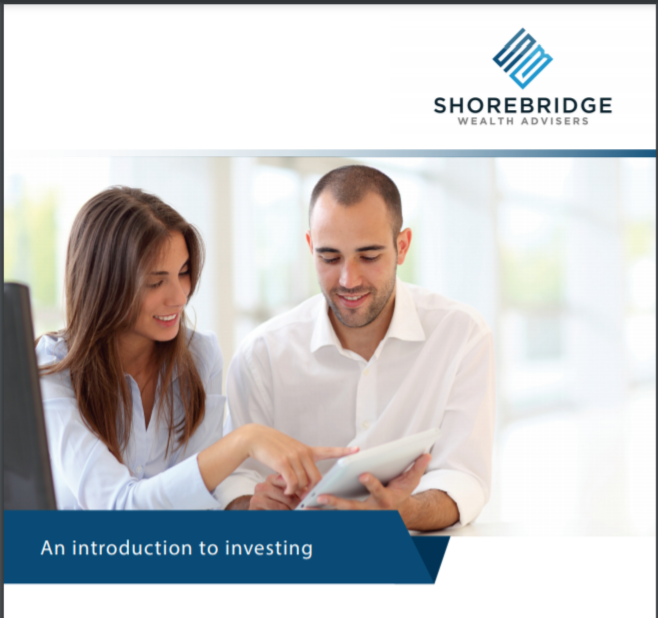Investing is full of jargon and technical terms that can make getting started or managing your investments seem intimidating. Here are some of the key terms to help you better understand the different options available to you.
Common investing terms
There are a few terms that you’ll see repeated when we’re talking about investing.
Bonds – Bonds are a way for corporations or governments to receive a loan from investors for a promised rate of return over a specific period. Bonds can be issued to pay debts, build new facilities or raise funds for future growth.
Cash – Cash investments are savings accounts and other easy to access funds like cash management trusts and money market funds. Cash investments are stable and low risk, generally growing slower than inflation or the increase in prices of goods and services over time.
Diversification – Having a diverse group of investments means that you spread your investments across different companies or sectors (for example, shares or fixed interest). This way, if one sector underperforms or has a loss, you have other investments that may perform better and help balance out any losses.
Another way we diversify our investment options and portfolios is by using different investment managers, with different approaches to investing. In some cases we use multiple investment managers in the same option. These are called multi-manager portfolios.
Dividends – Dividends are a portion of profits or earnings paid to shareholders. They are paid on a regular basis and in some cases can be reinvested into the business in the form of more shares. This can provide shareholders with ongoing income.
Domestic Markets – Domestic markets, shares or companies refers to the variety of investments that are connected to that country, either through where they operate or the investment exchanges on which they reside. In Australia, we would refer to Australian bonds as domestic bonds. Likewise, a US-based fund would refer to the US stock market as the domestic market.
Environmental, Social and Corporate Governance (ESG) – ESG is the consideration of an investment beyond its financial performance. It often includes social and environmental factors, like its impact on the climate, the gender or cultural diversity of staff and leadership or general benefit to society. Investors are increasingly applying these considerations as part of their investing decisions.
Equities – Equities are another name for shares. Equities can be bought directly on the share market or through an investment option.
Fees – A fee is the amount charged by a fund to manage your investments. Fees may vary based on factors including the cost to manage an option, the size of the investment and the management style.
Geared Investments – Geared or ‘leveraged investing’ is a way to borrow money in order to increase the size of an investor’s original investment. Geared investments are often made with higher risk assets like shares and property.
International and Emerging Markets – International markets can give investors access to a variety of investments including shares, securities, property or bonds from nations other than their own.
International markets can be volatile because of international trade relations or fluctuations in currency value. There is more risk with less stable countries, like those in economic or political turmoil, and less risk in more stable countries.
Emerging markets are international markets that focus specifically on growing and developing economies like China, Brazil or India.
Investment Manager – An investment manager is a professional person or organisation who has been appointed to manage money in an investment option on behalf of investors. One or multiple investment managers may be appointed to an investment option. They generally have specialised expertise in the area they represent, like property, bonds or shares.
Investment managers are selected for their strengths in certain areas as well as organisational stability, solid investment process and a history of strong performance. We also use a specialist investment consulting and research firm when selecting managers.
Managed Fund – A managed fund pools your money together with other investors to buy a variety of assets like shares, bonds or property. Managed funds can be invested in single or multiple asset classes and have single or multiple investment managers.
Risk – Risk in investing is about understanding, anticipating and accepting the potential for financial loss in an investment. All investing has an inherent level of risk.
Risk can be seen as an option underperforming against expectation. Investors can spread their risk by diversifying their investments.
Securities – A security is a way to purchase a portion of an asset such as infrastructure, a property, loan or business. For example, shares are type of security that makes it easy to purchase a portion of a business.
Securities can be bought, sold or traded. The value can change based on market conditions, the value of the asset, expected income or general market conditions.
Share – A share or stock represents the purchase of a portion of a business. The value can increase or decrease based on a variety of factors including general market conditions as well as industry and company performance and challenges.
Some shares have lower volatility and provide strong regular dividends without necessarily increasing in value.
Short Selling – Short selling, or shorting, takes place when an investor believes the price of an equity (like a share) will go down. They arrange to sell shares on the market with intention of repurchasing them for a lower price later on. A short position is generally very high risk and can result in large losses if the price of the equity increases.
Mandate – A mandate is an agreement with an investment manager that sets out how money will be invested. It includes performance benchmarks and expectations, acceptable investments and investment ranges.
A mandate’s structure means that the investments are managed in a unique way for our investors, different from the investment manager’s options with other organisations. This gives CFS greater flexibility around the option including administration and reporting to investors.
Product Disclosure Statement – A Product Disclosure Statement (PDS) is a review of all relevant product information for an investment option. You should always read the PDS before making any decisions about the relevant products. It offers information including the investment managers, risk measures, objectives and minimum suggested timeframe.
Units and Unit Pricing – The unit price tells you the value of the package of investments it contains. Investments are packaged in units that are made up of a variety of assets, like shares, bonds and property. Investing this way gives you the ability to invest in ways that you may not otherwise be able to access as an individual investor.
Reading an investment option
We use a standard description to quickly review and compare different investment options. Here’s what you should look for:
Objective
A sentence or two on what the investment option is designed to achieve and the timeframe to achieve it.
Minimum suggested timeframe
How long an investment professional suggests you hold, or remain invested in, an option in order to achieve the stated investment objective.
This is only a suggestion and should not be considered personal financial advice. Because financial markets can be volatile and unpredictable, it’s good to regularly review your investments with a financial adviser to ensure they meet your needs.
Risk
A snapshot of the expectation that an investment option will deliver a similar number of negative annual returns over a 20-year period.
Generally, the higher the level of risk an option has, the higher its return is expected to be. You should review the associated risks to see if the option is suitable for your needs.
Strategy
A description of the way the investment option is structured with some details about its contents and the reasons why those investments were chosen.
Investment category
A quick way to organise different options by their typical range. These categories are not standardised across the investment industry, so what is considered ‘growth’ in one organisation might be considered ‘moderate’ by another. You should read the full details of an option before making an investing decision. We’ll break down the different investment categories a bit later.
Allocation
A quick view of the different assets, or types of investments, contained in an investment option. In some cases, the assets are given a range, (i.e. between 15-25%), which indicates the minimum and maximum ranges that may be held in the option at any time. The investment manager may make changes within that range for different reasons including market volatility. Not all investments offer an allocation benchmark.
Underlying investment managers
These are the professional investment managers and organisations that have been appointed to manage the money in the investment option. There may be one or more, which is known as a multi-manager fund.
Investment categories and asset classes
There are a few different ways we organise and categorise investments to make it easy to understand how they are structured.
Cash and deposits
Cash is invested in reasonably stable domestic currency, like bank bills. Cash is liquid, making it easier to quickly access funds as required. It also includes term deposits (money invested for a set period) and money market securities. Cash and deposits are generally low risk and provide a low, stable return.
Less liquid than cash and deposits, enhanced cash is invested in money market securities and some fixed interest securities.
Fixed interest
Fixed interest investments are investments made with a guaranteed rate of return. These are usually issued by corporations, governments or financial institutions to raise funds. They have a set rate of return, which is usually higher than cash but lower than higher-risk options like shares. The return comes from interest payments from the bond issuer. The amount of that return can change based on interest rate repayments.
Alternatives
Alternative funds may include a diverse mixture of investments including hedge funds or commodity trading like oil or livestock. Basically, anything that falls outside of the traditional shares, property, infrastructure, cash or fixed interest categories are called alternatives.
Property
Property investing generally involves buying a property or buying a stake in a building through a property security. These properties can be office spaces, industrial properties or retail. A company or trust (a group acting on behalf of the investors) generally hold, manage and develop these properties.
Infrastructure
Infrastructure is a broad term that refers to physical assets. It may include public transportation, toll roads or utilities like water desalination. It may also include social infrastructure investments in public housing, hospitals or prisons.
Infrastructure investments or securities (a portion of the investment purchased on a public market) are generally expensive and have high upfront capital requirements. They also feature low ongoing operating costs and have a reasonably stable return.
Shares
The most recognised method of investing, shares are part ownership of a company. They are generally bought and sold on a public stock exchange. Because of the general volatility of the share markets, shares are considered a high risk asset.
Over time, however, they tend to outperform other asset classes. The amount of risk can depend on the particular company invested in or the industry or region they come from.
Risk measures and categories
Risk is broken down into some general categories in order to help organise different investment options.
Because there is no industry standard around the naming of the categories, the level of risk may vary between funds. What is a conservative investment with one fund may be considered a moderate investment with another.
Risk is generally broken down into the following categories:
| Risk band | Risk Label | Estimated number of negative annual returns over any 20-year period |
| 1 | Very low | Less than 0.5 |
| 2 | Low | 0.5 to less than 1 |
| 3 | Low to medium | 1 to less than 2 |
| 4 | Medium | 2 to less than 3 |
| 5 | Medium to high | 3 to less than 4 |
| 6 | High | 4 to less than 6 |
| 7 | Very high | 6 or greater |
Source: Colonia First State





